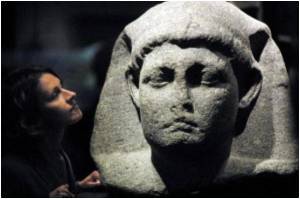
"It seems Dr. Zimmerman's work from 1995, my own research in 2007-08 and reputed scientists' work (Strouhal, Zink, Nerlich, Capasso and others) were not enough to convince Prof. Rosalie David," Archnews quoted Veiga as saying.
The article by David, titled 'Scientists suggest that cancer is purely man-made', was published in Nature Reviews Cancer last October 2010 and claimed that "cancer is man-made and something that we can and should address."
Veiga said that one of the researchers involved in this study was one of her sources and has worked with human remains showing evidence of tumours for years, and the other was her adviser on the subject.
In the article, Zimmerman said, "In an ancient society lacking surgical intervention, evidence of cancer should remain in all cases. The virtual absence of malignancies in mummies must be interpreted as indicating their rarity in antiquity, indicating that cancer causing factors are limited to societies affected by modern industrialization."
Veiga argues that he could not advocate that cancer did not exist because, in 1977, Zimmerman made some experiments trying to mummify cancerous tissues to see if they stay preserved or not for future analysis.
Advertisement
Zimmerman had also said that, "There are only a handful of reports of tumours in ancient remains." Veiga said that they could now add some more to the reported cases, thanks to the development of techniques and studies done on material found in excavation sites, which were not available before.
Advertisement
"I congratulate her on her eternal efforts over the past 30-40 years and I am grateful for the experience, but, she never researched, wrote, or talked about cancer in ancient Egypt BEFORE my presence there, as it happens to be my idea," Veiga said.
"I am not writing this as a 'vendetta' tool, on the opposite; I am trying to alert anyone thinking of undergoing research on the KNH that the projects for which it was famous in the last decade are done and delivered," she added.
Veiga explained that, "what man has made with the polluting agents is TO INCREASE the probability of cancerous cells developing in a human or other mammal body."
"And, there is reason to think, from studies done on the Ebers Papyrus, that oncology was a fact in ancient Egypt. Ancient Egyptian doctors already had some information that enabled them to diagnose and treat cancers, although the literary sources do not clearly describe how they distinguish an abscess from a pustule or neoplasia."
"Just because it was published on Nature it does not mean it is bullet-proofed; other scientists' work, past and future, have and will determine the 'non-sense' of this title and this vague approach to a huge subject," she concludes.
Source-ANI














